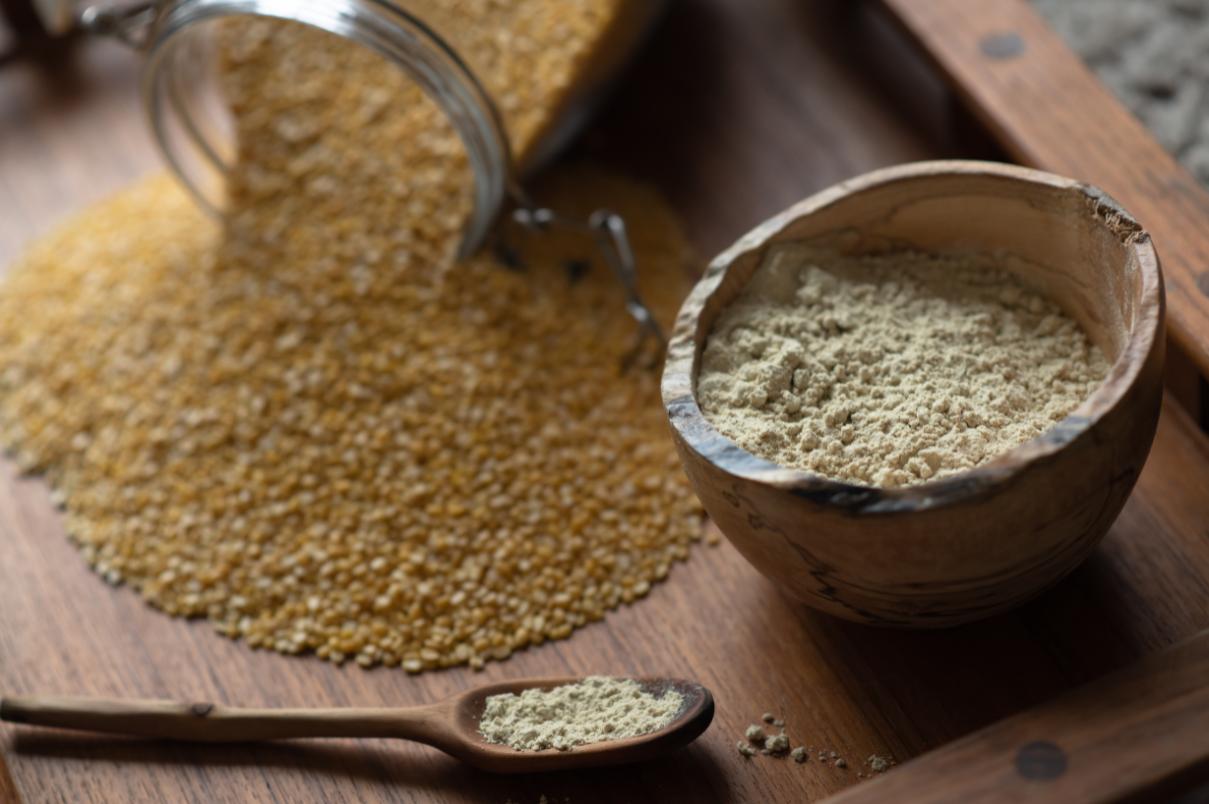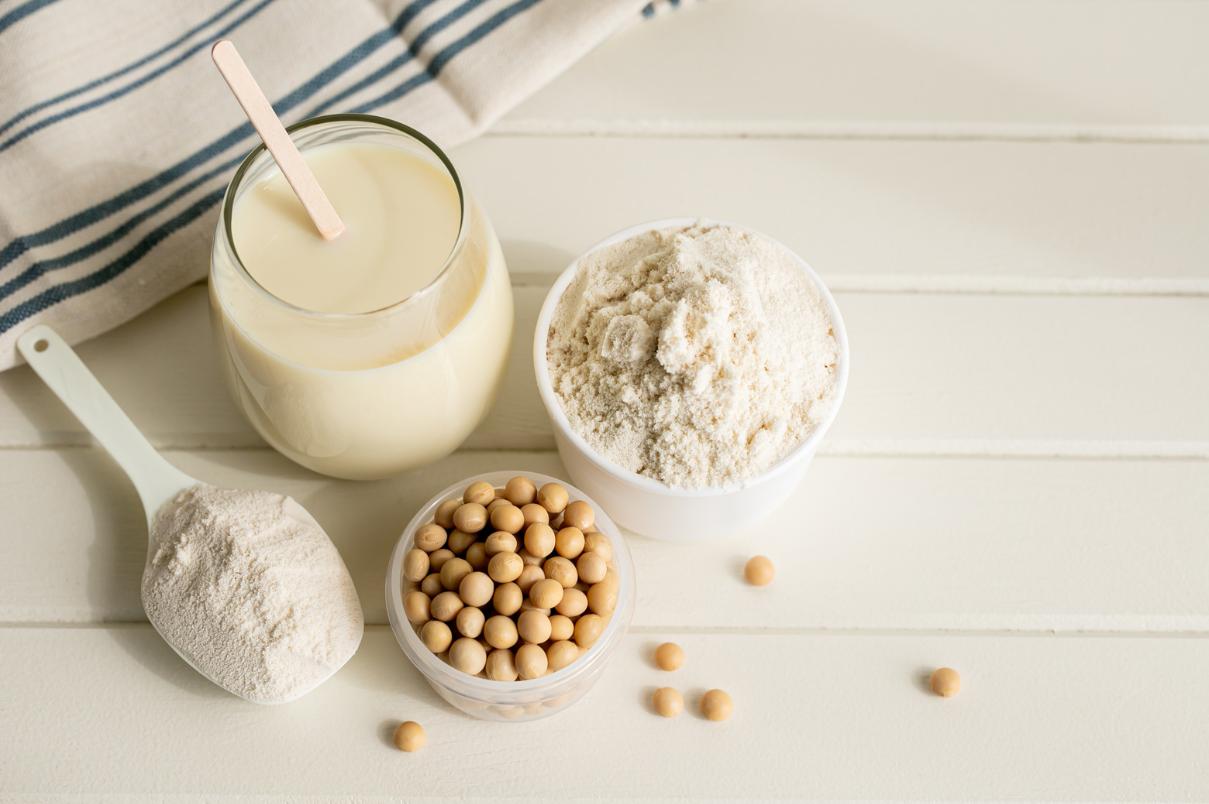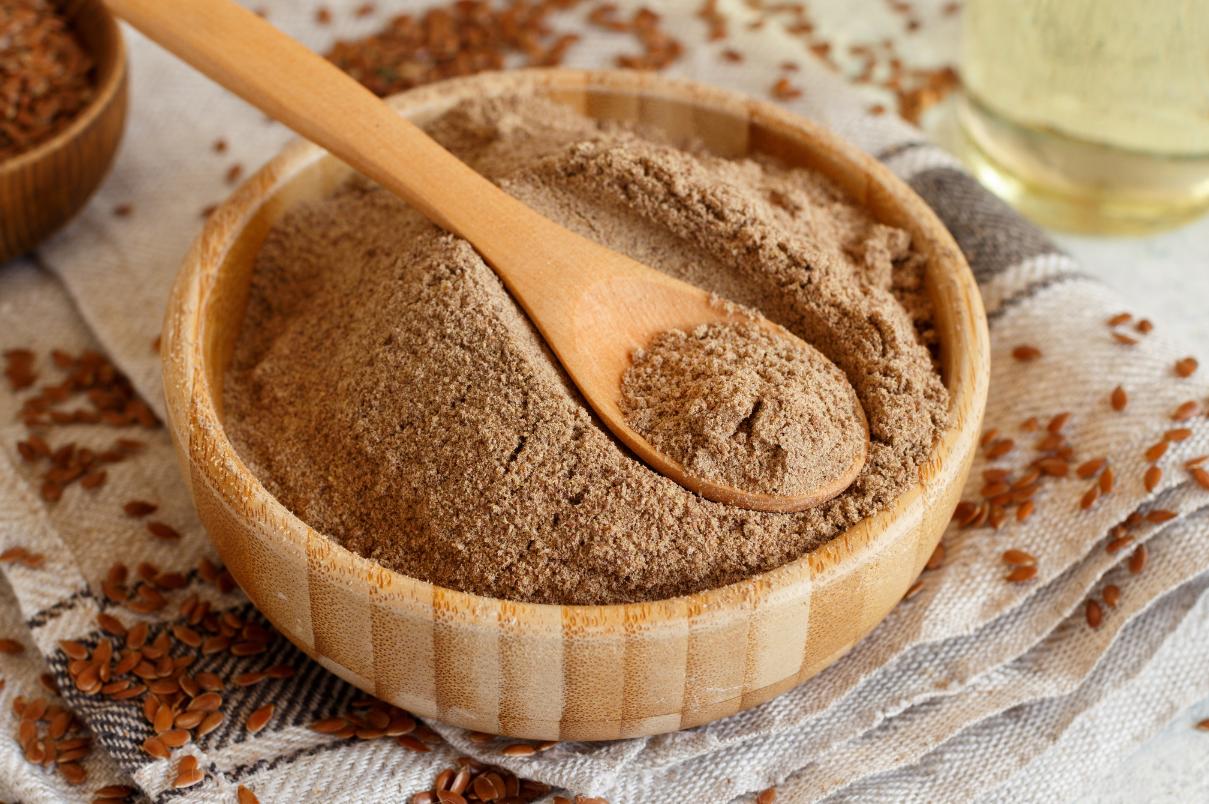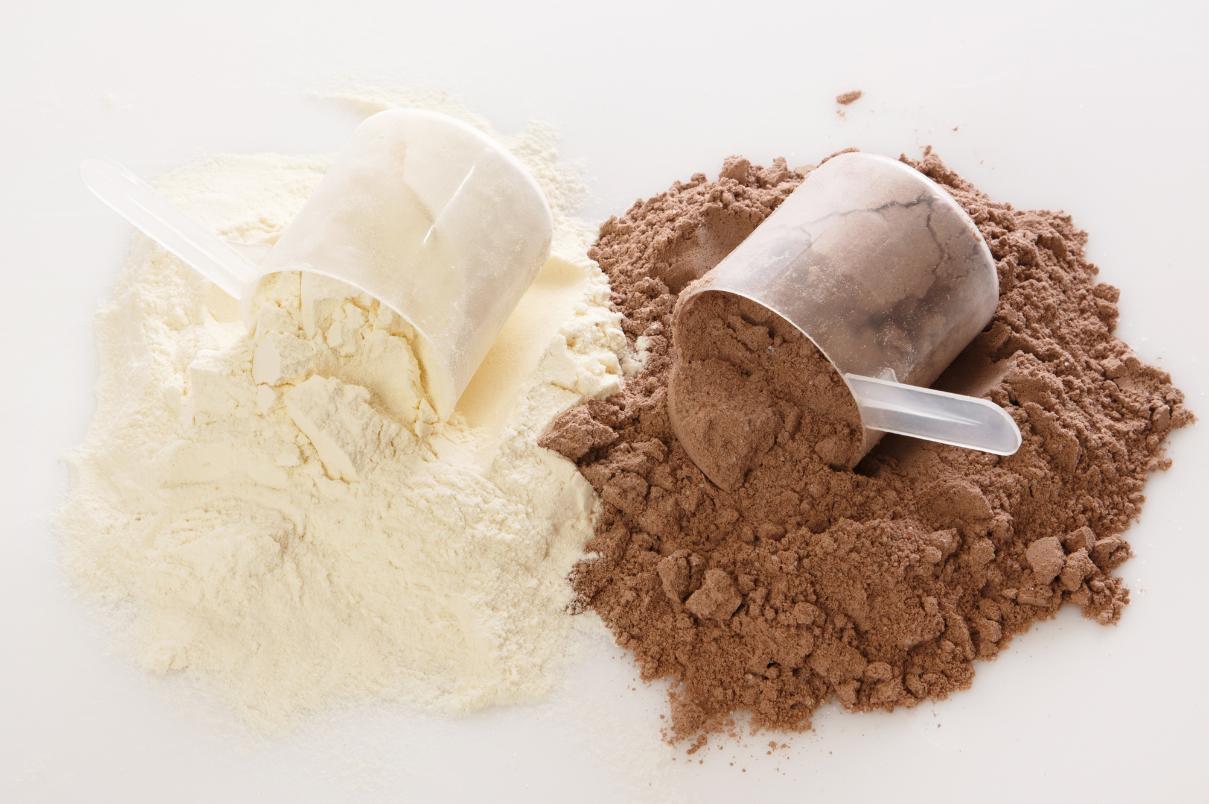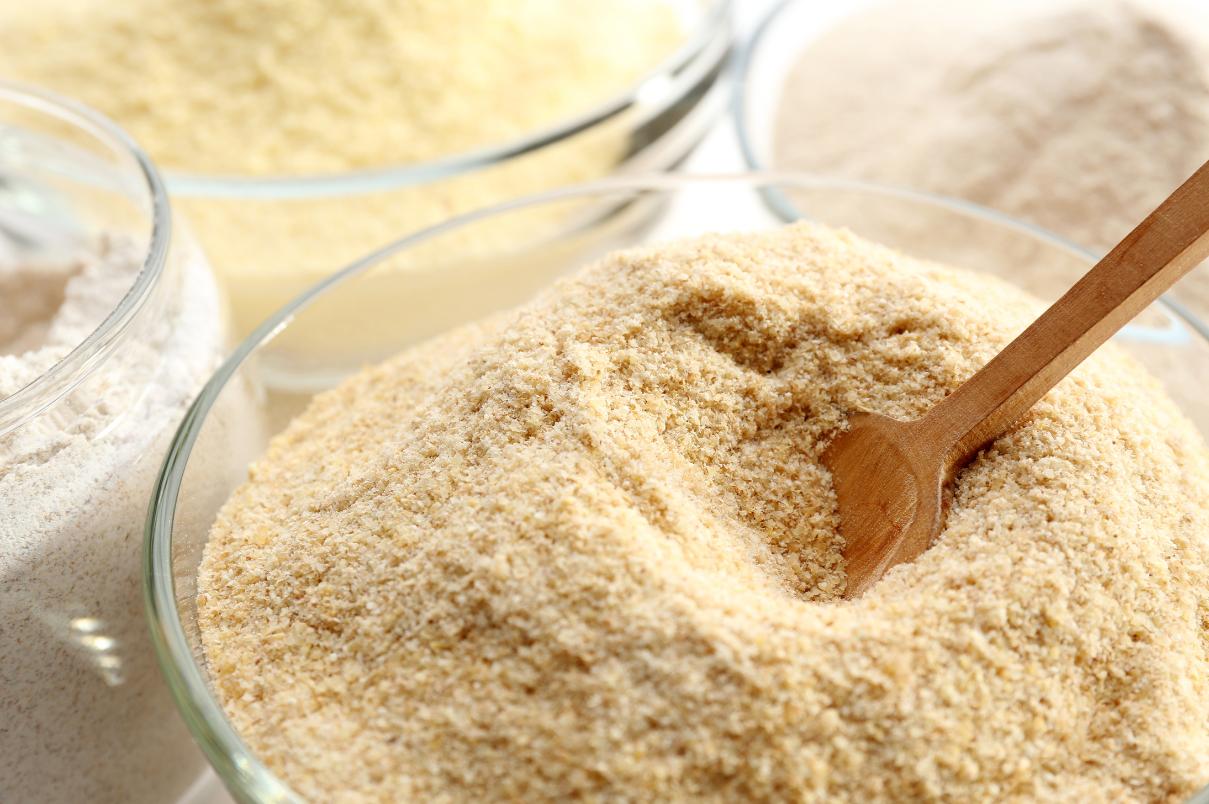Homemade Protein Powder (vegan) | The Green Loot
For more inspiration, check out our protein powder recipes roundup for delicious meals to make with your homemade protein powder.
Ingredients for Homemade Protein Powder
There are many different ways to make homemade vegan protein powder. Choose one ingredient, or mix different kinds to get your desired nutritional profile.
Pea Protein
Pea protein is high in protein and fiber, low in fat, and inexpensive. On its own, it’s an acquired taste, so you may want to mix it with seeds and definitely add flavoring.
Soy Protein
Like pea protein, soy is a great low fat, high protein option. Soy is also considered a complete protein because it contains all 9 amino acids.
Seeds
Seeds like chia, flax, and pumpkin are a great option for getting your Omega-3s, fiber, vitamins, and minerals. Seed protein powder can be high in fat per gram of protein, so you may want to blend it with a low fat protein like pea protein or soy protein.
Sweetener/Flavoring
If you’d like to mix your protein powder with water or plant milk, you’ll want to add flavor and sweetness to make it palatable. For chocolate, add low fat cocoa powder. For vanilla, add vanilla bean powder. Then for sweetener, you can use sugar, stevia, or another sugar substitute.
How to make DIY vegan Protein Powder
Pea Protein Powder
To make pea protein powder, add dry split peas to a high speed blender and grind until a fine texture is achieved. Sift out any larger pieces with a sieve, then add any other types of protein like seeds, your preferred flavors, and sweeteners, then transfer to an airtight container and store in a cool, dry place.
Alternatively, you can purchase pea protein isolate, which is higher in protein, rather than grinding your own peas.
Soy Protein Powder
It can be tricky to make soy protein completely from scratch so a better option is using premade soy flour or soy protein isolate, which is inexpensive. Mix with another protein if desired, then add your favorite flavors and sweetener then transfer to an airtight container and store in a cool, dry place.
Seed Protein Powder
To make seed protein powder, choose your favorite seed and pulse in a high speed blender until a fine texture is achieved. You may need to pause and let the seeds rest during this process to let the seeds cool down to avoid releasing the oils and making seed butter instead. Sift out any large pieces, then mix with other protein, add flavoring, add sweetener, and store in an airtight container in the freezer.
How to Store Homemade Protein Powder
Homemade protein powder storage and shelf life depends on the ingredients. When in doubt, store your protein powder in the refrigerator or freezer.
Pea protein and soy protein have a shelf life of 6 months in a cool, dry place. Protein powder made with seeds is best stored in the freezer or refrigerator so the oils don’t go rancid, and can last 6 months in these conditions.
Serving
The serving size for most store bought protein powders contains 20-25g of protein. Homemade protein powders are usually not pure protein since it requires special equipment and ingredients to isolate the protein in ingredients. Targeting 20g of protein per serving of homemade protein powder may come with an excessive amount of calories, fat, and carbohydrates. For example, 2.5 tablespoons of chia seeds contains 140 calories, 9 grams of fat, and 5 grams of protein. In order to consume 20 grams of protein from chia seeds, you’d also be consuming 36 grams of fat, which is the majority of fat content recommended for one day. To avoid this, choose a low fat and calorie protein source like pea or soy protein, or blend with seeds to reduce the amount of calories and fat per gram of protein.
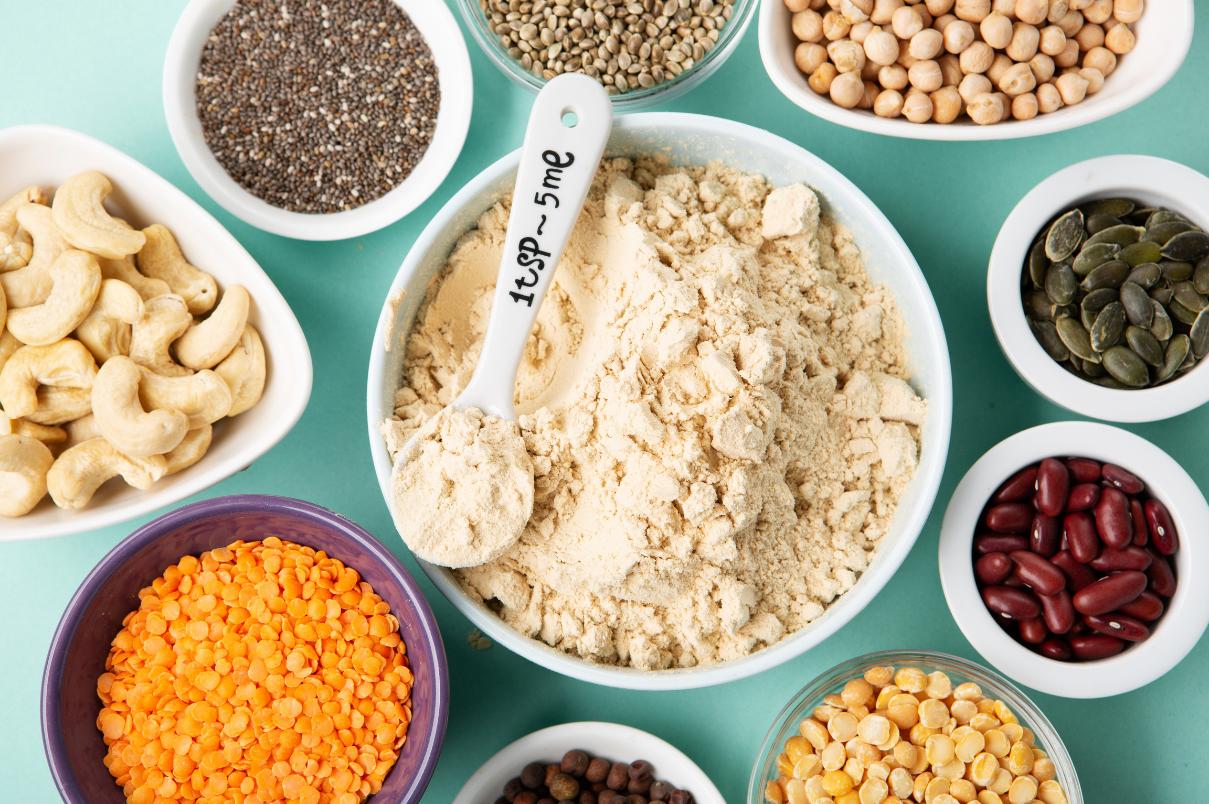

Servings: 12
- 1 cup dry split peas
- 1 cup soy flour
- 1 cup chia seeds
- 1/2 cup flax seeds
- sugar-free sweetener optional, to taste
- cocoa powder optional, to taste
Homemade Protein Powder FAQ
Is it cheaper to make your own protein powder?
Yes, it is cheaper to make your own protein powder. Store bought plant-based protein powders can retail for $20-50 per container with 15-20 servings. The cost per serving varies depending on the protein source you use, but homemade protein powder is a fraction of the cost per serving whether you’re using pea protein, brown rice, soy protein, or seeds.
What is a good substitute for protein powder?
Can I make my own pea protein powder?
Yes, you can make a version of pea protein powder by blending dry split peas. However, this homemade version contains carbohydrates and additional fiber, and may be an acquired taste. Making pure pea protein isolate requires special equipment to separate the hull and distill the protein. You can purchase pea protein isolate and mix it with flavoring and other ingredients.

